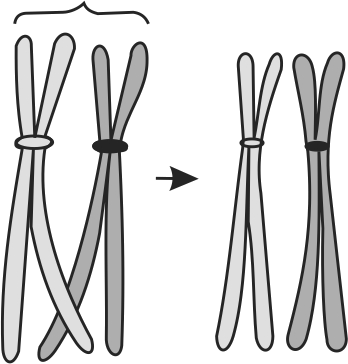335981
Match Column I(Sub Phases of Prophase I) with Column II(Specific Characters) :
Choose the correct answer from the options given below
Column I
Column II
A
Diakinesis
P
Synaptonemal
complex
formation
B
Pachytene
Q
Completion of
terminalisation
of chiasmata
C
Zygotene
R
Chromosomes
look like thin
threads
D
Leptotene
S
Appearance of
recombination
nodules
335981
Match Column I(Sub Phases of Prophase I) with Column II(Specific Characters) :
Choose the correct answer from the options given below
Column I
Column II
A
Diakinesis
P
Synaptonemal
complex
formation
B
Pachytene
Q
Completion of
terminalisation
of chiasmata
C
Zygotene
R
Chromosomes
look like thin
threads
D
Leptotene
S
Appearance of
recombination
nodules
335981
Match Column I(Sub Phases of Prophase I) with Column II(Specific Characters) :
Choose the correct answer from the options given below
Column I
Column II
A
Diakinesis
P
Synaptonemal
complex
formation
B
Pachytene
Q
Completion of
terminalisation
of chiasmata
C
Zygotene
R
Chromosomes
look like thin
threads
D
Leptotene
S
Appearance of
recombination
nodules
335981
Match Column I(Sub Phases of Prophase I) with Column II(Specific Characters) :
Choose the correct answer from the options given below
Column I
Column II
A
Diakinesis
P
Synaptonemal
complex
formation
B
Pachytene
Q
Completion of
terminalisation
of chiasmata
C
Zygotene
R
Chromosomes
look like thin
threads
D
Leptotene
S
Appearance of
recombination
nodules

